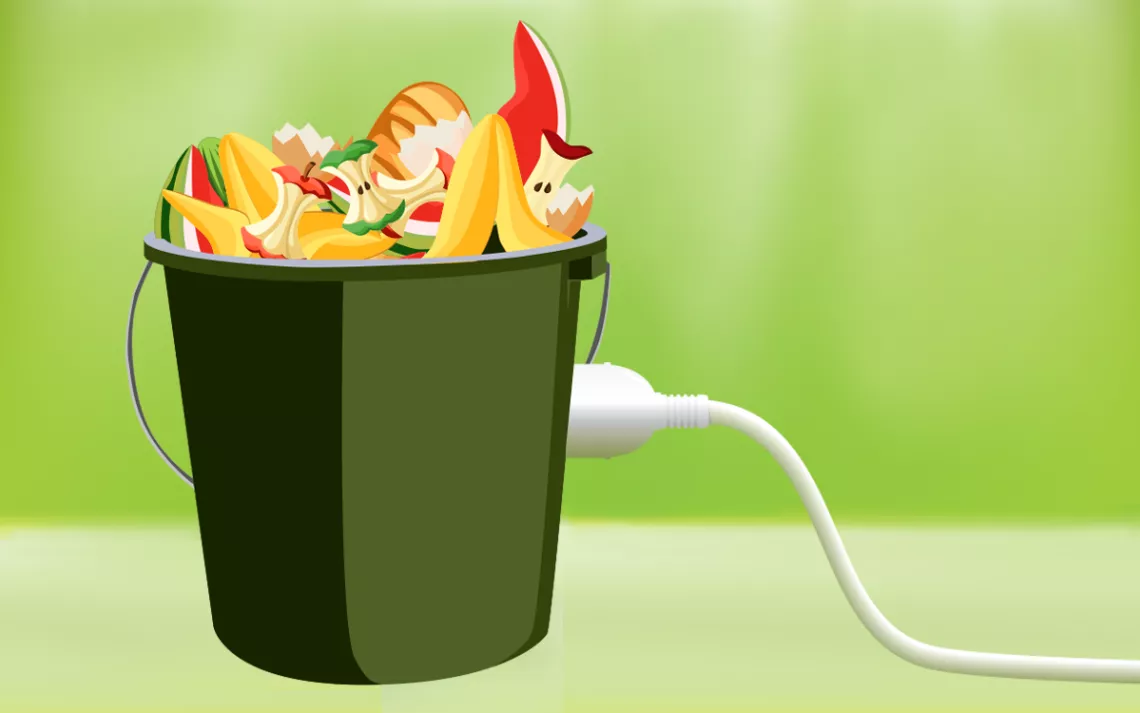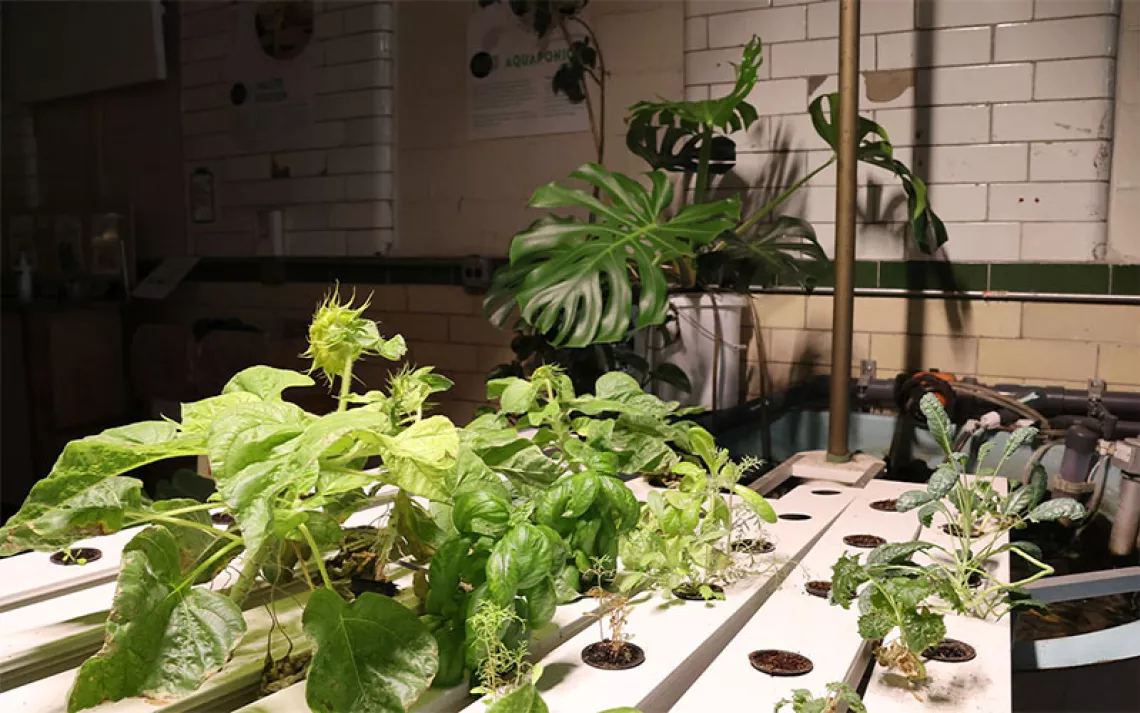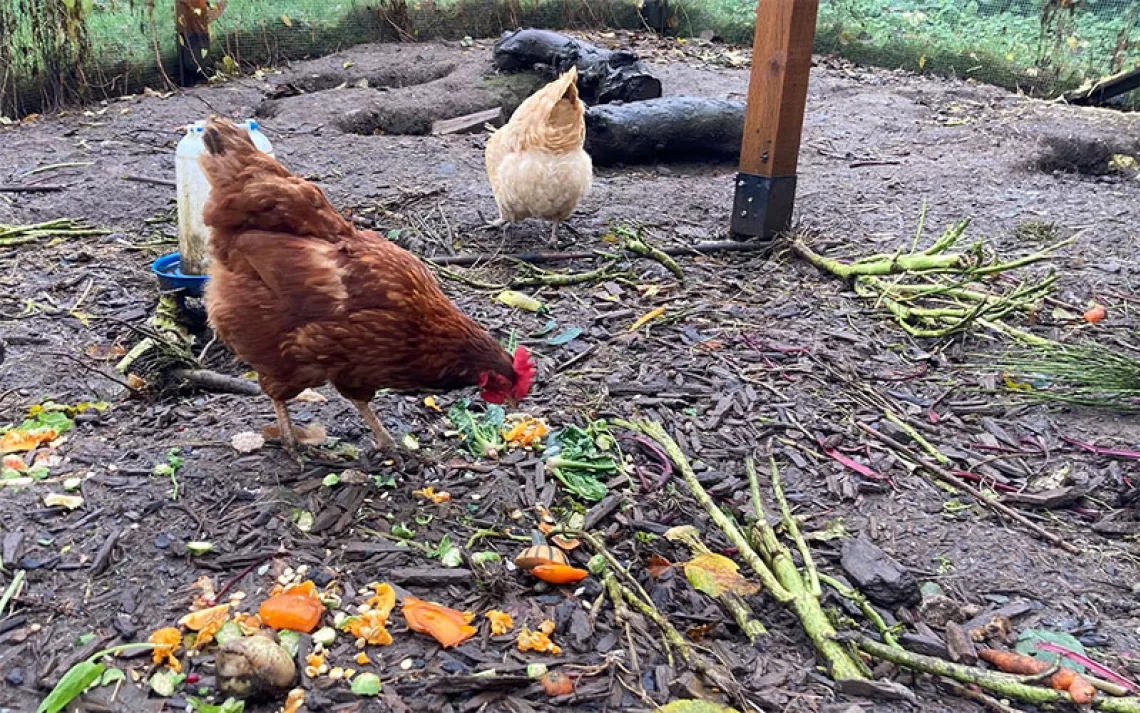The Problem With Those Kitchen Composting Machines
Spoiler: For starters, what they produce is not compost.

There is something undeniably reassuring about toting my grubby plastic pail of food scraps to the compost pile twice a week. Though the pail can at times be slimy, the knowledge that this glob of waste will soon turn into something useful feels like a beacon of certainty in a world full of chaos.
Perhaps that’s why, when I first heard of the concept of an electric composting appliance a couple months ago, I was thrown. My brain could not fathom that the process of decomposition—mix carbon from decaying plant matter, nitrogen from your food scraps, microorganisms courtesy of the dirt outside, a bit of oxygen, and then wait—might be improved upon.
Though you wouldn’t be able to tell by the ads, which surely litter your social media feed (or are about to after you read this article), these appliances don’t actually create the nutrient-rich stuff we normally call compost. Instead, they rapidly break down your kitchen waste using a mixture of heat, mechanical grinding, and dehydration, resulting in what Helen Rosner of The New Yorker described as “an organic fluff of nicely cooked, thoroughly dried-out stuff.”
It is then up to you to discard that “stuff,” whether by adding it to your houseplants, dropping it off at a community compost spot, or just depositing it in your regular trash. If you try to use it to grow new plants, thereby repeating the cycle as nature intended, you might be disappointed.
Sold by different companies under different names—the Lomi and Vitamix’s FoodCycler are both popular—these machines will cost you anywhere in the region of $400 to $500. But the company Mill takes it a step further, by not only charging you to use such a machine but also billing you a monthly fee for the opportunity to mail your end-product back to the company, which will dispose of it for you.
After getting my head around the concept of these composters, I’ve realized there are two logical fallacies here: a practical one and a philosophical one.
Let’s consider the first. If you must have access to existing compost to be able to do anything with the machine’s end-product—if its nutrient-poor nature means it can’t serve as the basis for new plant life on its own—what’s the point of paying for an appliance to grind down your waste for you? It also sounds like considerably more work than actually composting. Load this thing nightly, and then empty it daily, and then most crucial, figure out something to do with the dirt piling up in your kitchen that’s not just throwing it in the regular old landfill trash. Much harder than emptying a plastic pail into a pile twice a week.
It’s true that not everyone has access to land or space on which to have an at-home compost. Community compost schemes at places like farmers’ markets and the city-wide collection of food waste are the real heroes here and should be expanded. But the solution to that lack of access is definitely not for-profit companies selling appliances that create something inferior to compost, all while charging you for the privilege.
That leads us to the second fallacy—the philosophical one—which is that these machines seem to run counter to everything that composting itself represents. My humble compost pile seems to embody all the values and principles that are so lacking in our society: balance, equilibrium, patience, thrift, rest, regeneration, cooperation, and a reverence for the cycles that sustain literally every living thing on Earth. Attempting to co-opt this process of decomposition and turn it into a for-profit consumer product with an associated subscription fee would strip it of all the beautiful efficiency and cyclicality that makes it, well, compost.

Make every day an Earth Day
Get articles like this one sent directly to your inbox.
With this action you affirm you want to receive Sierra Club communications and may vote on policy designated by the Sierra Club Board.
More broadly, when you consider the vast chasm between how natural systems like compost work versus how the conditions of our modern lives are structured, it’s pretty obvious why our world is in the state it’s in. We are cyclical beings stuck in a linear civilization, ignoring the pattern that everything else runs so beautifully on.
Many other climate solutions we see touted by for-profit companies—as well as governments and policy-makers for that matter—follow this flawed line of thinking. Instead of actually reducing our carbon emissions, we can create a marketplace where we “offset” them and continue flying and driving to our heart’s content. Instead of addressing the gaps in our food system and the just-in-time nature of our precarious supply chains, we can manufacture food in labs and genetically modify seeds that will feed more people faster.
These types of solutions seem to double down on the idea that more, faster, better is the way out of this mess. Forget giving the earth time to regenerate, to produce less, to heal—and god forbid asking citizens to relearn or adapt to that different way of being.
But the problem is, we can’t solve the problems of capitalism with more capitalism. We already have many of the solutions we need. We need to stop thinking we’re the ones running the appliance. We need to embrace the fact that we’re actually just the compost.
 The Magazine of The Sierra Club
The Magazine of The Sierra Club



